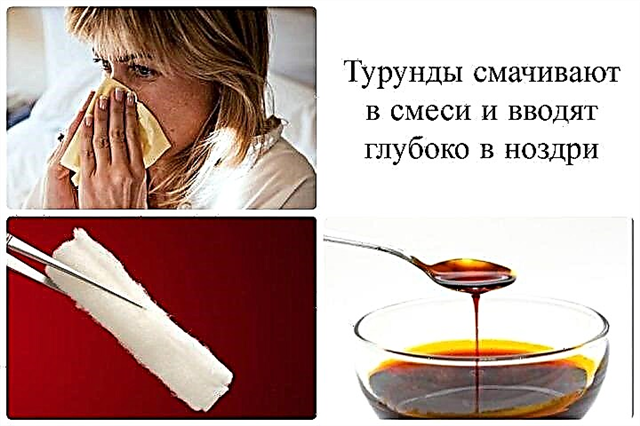Children often get sick, and this is largely due to imperfect personal hygiene, close contact with other children or adults who are sources of infection, as well as an immaturity of the immune system, as a result of which the body becomes susceptible to viruses and bacteria. Redness of the mucous membrane of the pharynx and tonsils is a persistent sign by which a person examining the throat of a sick child can judge the presence and severity of the inflammatory process. Often, parents and practicing pediatricians are faced with cases of classic pharyngitis and tonsillitis, but if the pimples in the child's throat have a reddish tint, the approach to diagnosis will be different.
Causes
 Throat diseases are a broad concept, since it includes a whole group of heterogeneous pathologies that can be caused by both viruses and bacteria, and pathogenic fungi (mycoses). The "throat" in the conventional sense includes the pharynx, lymphoid formations - the tonsils, and sometimes - the larynx, located next to the pharynx. Since during visual examination without special devices it is possible to see mainly the posterior wall of the pharynx and palatine tonsils, complaints of rashes are usually explained by the defeat of these anatomical areas.
Throat diseases are a broad concept, since it includes a whole group of heterogeneous pathologies that can be caused by both viruses and bacteria, and pathogenic fungi (mycoses). The "throat" in the conventional sense includes the pharynx, lymphoid formations - the tonsils, and sometimes - the larynx, located next to the pharynx. Since during visual examination without special devices it is possible to see mainly the posterior wall of the pharynx and palatine tonsils, complaints of rashes are usually explained by the defeat of these anatomical areas.
A rash in the throat in children is a symptom that can only be called relatively specific. Rashes such as spots, nodules or vesicles (vesicles) are not characteristic of the typical form of pharyngitis or tonsillitis (tonsillitis), and it is these diseases that are most common. The defeat of the mucous membrane, accompanied by the appearance of vesicles, is observed when infected with viruses of the herpes group, enteroviruses that cause:
- herpangin;
- chickenpox;
- herpetic stomatitis.
Pimples in the throat are usually due to an infectious process.
However, at the same time, other changes that are present in commonplace (simple, classical) forms of inflammatory processes can be taken for a rash. For the diseases named in the list, a blistering rash, often with a transparent or cloudy exudate, is characteristic, and not elements resembling pimples or pimples. Therefore, the diagnosis should be carried out by a specialist who is familiar with the peculiarities of changes in the mucous membrane of the oropharynx in various pathologies.
You should also distinguish between infectious and inflammatory pathologies that occur acutely or chronically, provoked by viral or microbial agents. For example, white pimples in the throat may indicate a bacterial infection of the pharynx - bacterial pharyngitis. The etiology of the disease in an infectious process determines the choice of treatment, therefore, timely and high-quality diagnosis is necessary for a successful recovery.
Why can a child develop red pimple-like formations in his throat? This happens as a result of development:
- Acute infectious pharyngitis.
- Chronic hypertrophic pharyngitis.
These diseases are caused by an inflammatory process within the pharynx and are most often caused by respiratory viruses or bacteria (streptococci, staphylococci). The possibility of simultaneous damage to the tonsils (tonsillopharyngitis), which is often observed in children, especially in the younger age group, cannot be ruled out.
Differential diagnosis
What is the reason for the rash? When, when examining the throat, pimples are visible in the child's throat, most likely, we are talking about enlarged lymphadenoid follicles, which are located on the back of the pharynx. This phenomenon is typical for:
- acute infectious inflammation;
- hypertrophy (increase in size).
To distinguish pimples from blemishes and vesicles, you need to remember that:
- spots on the mucous membrane appear rarely, usually accompanied by the presence of a variety of rashes on any areas of the skin;
- vesicles are characterized by the formation of ulcers when an element of the rash is damaged or its natural development several days after the onset of the disease;
- vesicles can have contents - most often serous, bloody, and be combined with the appearance of a skin rash.
It should be understood that pimple-like formations can be an intermediate element in the development of a rash.
An example is chickenpox, in which spots turn into nodules and then blisters. The nodules may resemble pimples, but are soon replaced by vesicles. In addition, children usually have a rash on the skin in the form of blisters, pronounced itching of the affected areas.
The red color and the appearance against the background of the edematous reddened surface of the mucous membrane indicates the presence of an acute inflammatory process. It should also be noted the suddenness of the development of symptoms and the absence of pimples on the throat earlier. Normally, the mucous membrane of the pharynx has a calm pink color, which sometimes approaches red - for this reason, to be sure of the presence of hyperemia, it is necessary to examine the child's throat when he is healthy. This will help you immediately notice redness during an infection, or, conversely, make sure there is no inflammation.
Hypertrophic changes in the follicles on the posterior wall of the pharynx are characteristic of the chronic course of the inflammatory process (chronic pharyngitis). If the disease worsens, the enlarged follicles change color, become whitish or yellowish due to the accumulation of pus. In the period between exacerbations, they stand out against the background of a thickened mucous membrane, have a red tint.
Acute pharyngitis
An acute inflammatory process in the mucous membrane of the pharynx is often combined with rhinitis, laryngitis, or, as already mentioned, with tonsillitis or sore throat. However, there are also isolated forms that are associated with infection, exposure to harmful factors (hypothermia, dustiness, unfavorable living conditions). Acute pharyngitis in children is most often observed as a manifestation of ARVI (acute respiratory viral infection). It is also considered one of the syndromes associated with scarlet fever or measles.
Children, unlike adults, tolerate acute pharyngitis rather hard. The disease is characterized by a pronounced intoxication syndrome, severe sore throat and is accompanied by a high risk of infection spreading into the auditory tube (tubo-otitis, eustachitis) and middle ear (otitis media). Although in more than 70% of cases, acute pharyngitis is provoked by viruses that also cause SARS, you should be alert to infection with beta-hemolytic streptococcus.
Patient complaints
Children who can already formulate complaints are usually described as the dominant symptom of pain when swallowing. Pain syndrome is present in all forms of acute pharyngitis, regardless of the type of pathogen. Also, patients are worried about:
- dry and raw throat;
- ear congestion, hearing impairment;
- weakness, headache.

Along with the appearance of pimples, there is an irradiation of pain in the ears when swallowing.
With concomitant rhinitis, nasal breathing is disturbed, which makes the mucous membrane of the pharynx even more dry, since the child has to breathe through the mouth. Pimples in the throat are usually clearly visible. There may also be a cough, an obsessive cough - dry or with a scant amount of mucopurulent discharge. The increase in body temperature in children usually reaches 38 ° C or more.
Objective signs
Pimples on the surface of the mucous membrane of the posterior pharyngeal wall in an acute process:
- red;
- edematous;
- increased in size;
- stand out clearly;
- somewhat raised.
They are located randomly, in groups or at great distances from each other, but without an explicit restriction to a specific area. The mucous membrane also turns red, swells, and is covered with mucopurulent discharge.
Chronic pharyngitis
The chronic inflammatory process is divided into several main forms. In the presence of pimples and pimples in the pharynx, one should think about hypertrophic chronic pharyngitis, which is also called granulomatous or granulosa. This disease does not occur in children as often as an acute process, and is associated with impaired immune reactivity, the influence of harmful factors, the presence of foci of chronic infection in the oropharynx.
On examination, you can see that the mucous membrane is thickened, and mucus is located on its surface in the form of islands with uneven edges. Against the background of redness, rounded or elongated red formations are visible - hypertrophied follicles, or granules. It is they who are mistaken for a kind of pimples. They are located on the back of the pharynx, but can also be found on the lateral walls. Swelling of the follicles is noted, a significant increase in their size.
 The development of hypertrophic pharyngitis and the appearance of granules resembling pimples, probably when the tonsils are removed (tonsillectomy).
The development of hypertrophic pharyngitis and the appearance of granules resembling pimples, probably when the tonsils are removed (tonsillectomy).
This phenomenon was noted as a result of the study of postoperative dynamics in the long-term period. In some patients, hypertrophy occurs not only of the follicles, but also of the lateral ridges, the lingual tonsil.
The pain syndrome is not pronounced clearly, it becomes dominant only with an exacerbation of the course of chronic pharyngitis. In other cases, the patient experiences mild pain, discomfort when swallowing. He has to cough up mucus from time to time, which has a thick consistency.
If a child has pimple-like formations in his throat, see a doctor. Classic forms of diseases are not always found; in addition, the tolerance of the infection is individual, and if untreated, there is a high risk of complications. The younger the child, the more he suffers during the acute period, and even if only symptomatic treatment is possible (for example, with ARVI), this will significantly alleviate his condition.




